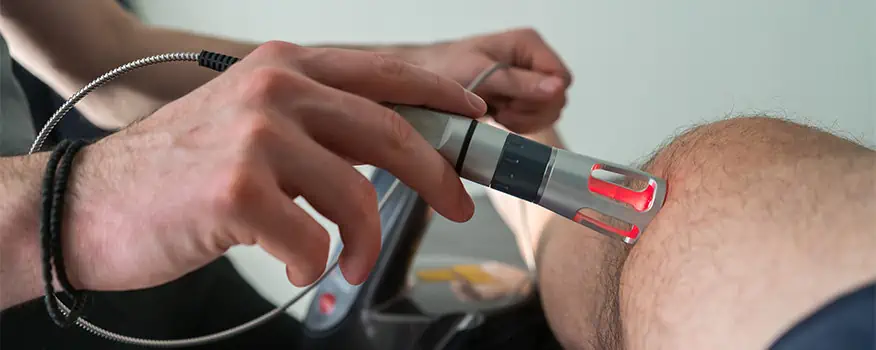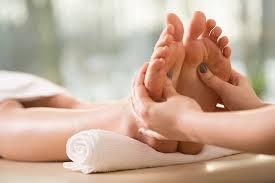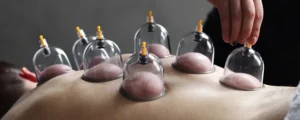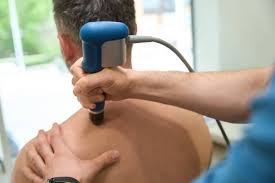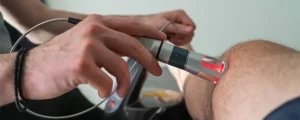The Science Behind Bio-Modulation Laser Therapy for Neuropathy
Bio-Modulation Laser Therapy (BMLT) is an innovative treatment approach for neuropathy that harnesses the power of low-level laser light to promote healing at the cellular level. The science behind this therapy is rooted in photobiomodulation, a process where specific wavelengths of light stimulate cellular activity, leading to increased circulation and reduced inflammation.
When applied to affected areas, BMLT penetrates the skin and interacts with mitochondria in cells, enhancing ATP production—the energy currency of cells. This boost in energy accelerates tissue repair and regeneration, making it particularly beneficial for patients suffering from neuropathy.
Benefits of Using Bio-Modulation Laser Therapy for Neuropathy Patients
Pain Relief: Bio-modulation laser therapy is known for its ability to reduce pain associated with neuropathy. The laser penetrates the skin and stimulates cellular activity, promoting healing and alleviating discomfort.
Improved Circulation: This therapy enhances blood flow to affected areas, which is crucial for neuropathy patients. Improved circulation can help deliver essential nutrients and oxygen to damaged nerves, aiding in recovery.
Reduced Inflammation: Bio-modulation lasers have anti-inflammatory properties that can help decrease swelling and inflammation in nerve tissues, leading to a reduction in symptoms.
Enhanced Nerve Regeneration: Studies suggest that this type of therapy can support the regeneration of nerve cells, potentially reversing some effects of neuropathy over time.
Non-Invasive Treatment Option: Unlike surgical interventions or medications that may have side effects, bio-modulation laser therapy is a non-invasive treatment option that generally has minimal risk associated with it.
Quick Treatment Sessions: Typically, sessions last only a few minutes, making it convenient for patients to incorporate into their schedules without significant time commitment.
Long-Lasting Results: Many patients experience prolonged relief from symptoms after completing a series of treatments, making it a valuable option for managing chronic neuropathic pain effectively.
By considering these benefits, neuropathy patients can explore bio-modulation laser therapy as a viable option in their journey toward improved health and quality of life.
Who Can Benefit from Bio-Modulation Laser Therapy?
Bio-Modulation Laser Therapy is a versatile treatment option that can benefit a wide range of individuals. Primarily, it is advantageous for patients suffering from chronic pain conditions, such as arthritis or fibromyalgia, as the therapy helps reduce inflammation and promote healing at the cellular level. Athletes and active individuals also find relief through this therapy, as it aids in faster recovery from injuries and enhances overall performance by improving circulation and reducing muscle soreness.
Moreover, those dealing with skin issues like acne or psoriasis can experience significant improvements through Bio-Modulation Laser Therapy. The non-invasive nature of this treatment makes it appealing for individuals seeking alternatives to traditional medical interventions. Additionally, older adults experiencing age-related ailments can utilize this therapy to improve mobility and quality of life.
Comparing Bio-Modulation Laser Therapy with Other Neuropathy Treatments
Bio-Modulation Laser Therapy (BMLT) has emerged as a promising treatment option for neuropathy, offering unique advantages when compared to traditional therapies. Unlike medications that often come with side effects or invasive procedures that may require significant recovery time, BMLT utilizes low-level laser light to stimulate cellular function and promote healing at the site of nerve damage.
Patients typically experience minimal discomfort during treatments, making it an appealing choice for those who are hesitant about more aggressive options such as surgery or nerve blocks. Furthermore, BMLT can be used in conjunction with other treatments, enhancing overall effectiveness without the risk of adverse interactions.
In contrast, conventional neuropathy treatments like oral medications may provide temporary relief but often fail to address the underlying causes of nerve damage. Physical therapy can be beneficial; however, it requires consistent commitment and may not yield immediate results. In comparison, Bio-Modulation Laser Therapy has shown potential for accelerating recovery times and improving symptoms more rapidly.
As research continues to evolve in this field, many healthcare professionals are beginning to recognize the value of incorporating BMLT into comprehensive neuropathy treatment plans. By understanding these differences and exploring various options available, patients can make informed decisions tailored to their specific needs and conditions.

